High-affinity carboxyl-graphene oxide-based SPR aptasensor for the detection of hCG protein in clinical serum samples
- PMID: 31308661
- PMCID: PMC6613200
- DOI: 10.2147/IJN.S208292
High-affinity carboxyl-graphene oxide-based SPR aptasensor for the detection of hCG protein in clinical serum samples
Abstract
Background: The use of functionalized graphene oxide (fGO) has led to a new trend in the sensor field, owing to its high sensitivity with regards to sensing characteristics and easy synthesis procedures.
Methods: In this study, we developed an ultra-sensitive carboxyl-graphene oxide (carboxyl-GO)-based surface plasmon resonance (SPR) aptasensor using peptides to detect human chorionic gonadotropin (hCG) in clinical serum samples. The carboxyl-GO based SPR aptasensor provided high affinity and stronger binding of peptides, which are great importance to allow for a non-immunological label-free mechanism. Also, it allows the detection of low concentrations of hCG, which are in turn considered to be important clinical parameters to diagnose ectopic pregnancies and paraneoplastic syndromes.
Results: The high selectivity of the carboxyl-GO-based SPR aptasensor for hCG recombinant protein was verified by the addition of the interfering proteins bovine serum albumin (BSA) and human serum albumin (HSA), which did not affect the sensitivity of the sensor. The carboxyl-GO-based chip can enhance the assay efficacy of interactions between peptides and had a high affinity binding for a ka of 17×106 M-1S-1. The limit of detection for hCG in clinical serum samples was 1.15 pg/mL.
Conclusion: The results of this study demonstrated that the carboxyl-GO-based SPR aptasensor had excellent sensitivity, affinity and selectivity, and thus the potential to be used as disease-related biomarker assay to allow for an early diagnosis, and possibly a new area in the field of biochemical sensing technology.
Keywords: carboxyl-graphene oxide (carboxyl-GO); human chorionic gonadotropin (hCG); surface plasmon resonance (SPR).
Conflict of interest statement
The authors report no conflicts of interest in this work.
Figures

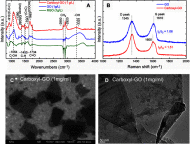
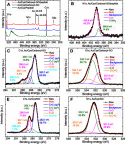
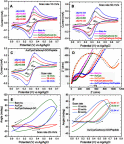

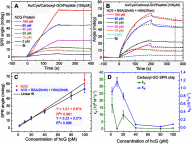
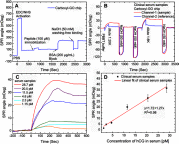
Similar articles
-
Clinical Application for Screening Down's Syndrome by Using Carboxylated Graphene Oxide-Based Surface Plasmon Resonance Aptasensors.Int J Nanomedicine. 2020 Oct 22;15:8131-8149. doi: 10.2147/IJN.S270938. eCollection 2020. Int J Nanomedicine. 2020. PMID: 33144830 Free PMC article.
-
Ultra-high sensitivity of the non-immunological affinity of graphene oxide-peptide-based surface plasmon resonance biosensors to detect human chorionic gonadotropin.Biosens Bioelectron. 2017 Aug 15;94:351-357. doi: 10.1016/j.bios.2017.03.008. Epub 2017 Mar 7. Biosens Bioelectron. 2017. PMID: 28319902
-
Development of a bioaffinity SPR immunosensor based on functionalized graphene oxide for the detection of pregnancy-associated plasma protein A2 in human plasma.Int J Nanomedicine. 2019 Aug 22;14:6735-6748. doi: 10.2147/IJN.S213653. eCollection 2019. Int J Nanomedicine. 2019. PMID: 31686806 Free PMC article.
-
Recent advances in the development of graphene-based surface plasmon resonance (SPR) interfaces.Anal Bioanal Chem. 2013 Feb;405(5):1435-43. doi: 10.1007/s00216-012-6624-0. Epub 2013 Jan 15. Anal Bioanal Chem. 2013. PMID: 23314618 Review.
-
Graphene-based nanocomposites for sensitivity enhancement of surface plasmon resonance sensor for biological and chemical sensing: A review.Biosens Bioelectron. 2019 Aug 15;139:111324. doi: 10.1016/j.bios.2019.111324. Epub 2019 May 15. Biosens Bioelectron. 2019. PMID: 31121435 Review.
Cited by
-
Ultraefficiently Calming Cytokine Storm Using Ti3C2T x MXene.Small Methods. 2021 May 12;5(5):e2001108. doi: 10.1002/smtd.202001108. Epub 2021 Jan 18. Small Methods. 2021. PMID: 33786372 Free PMC article.
-
Nanotechnology in reproductive medicine: Opportunities for clinical translation.Clin Exp Reprod Med. 2020 Dec;47(4):245-262. doi: 10.5653/cerm.2020.03650. Epub 2020 Nov 16. Clin Exp Reprod Med. 2020. PMID: 33227186 Free PMC article.
-
Construction and Application of Graphene Oxide-Bovine Serum Albumin Modified Extended Gate Field Effect Transistor Chiral Sensor.Sensors (Basel). 2021 Jun 7;21(11):3921. doi: 10.3390/s21113921. Sensors (Basel). 2021. PMID: 34200213 Free PMC article.
-
Nanomaterial application in bio/sensors for the detection of infectious diseases.Talanta. 2021 Aug 1;230:122026. doi: 10.1016/j.talanta.2020.122026. Epub 2020 Dec 17. Talanta. 2021. PMID: 33934756 Free PMC article. Review.
-
High-Sensitivity Detection of the Lung Cancer Biomarker CYFRA21-1 in Serum Samples Using a Carboxyl-MoS2 Functional Film for SPR-Based Immunosensors.Front Bioeng Biotechnol. 2020 Mar 26;8:234. doi: 10.3389/fbioe.2020.00234. eCollection 2020. Front Bioeng Biotechnol. 2020. PMID: 32274382 Free PMC article.
References
-
- Dikin DA, Stankovich S, Zimney EJ, et al. Preparation and characterization of graphene oxide paper. Nature. 2007;448:457–460. - PubMed
-
- Zhu SE, Yuan S, Janssen GCAM. Optical transmittance of multilayer graphene. Europhys Lett. 2014;108:17007. doi:10.1209/0295-5075/108/17007 - DOI
-
- Chiu NF, Huang TY. Sensitivity and kinetic analysis of graphene oxide-based surface plasmon resonance biosensors. Sens Actuators B Chem. 2014;197:35–42. doi:10.1016/j.snb.2014.02.033 - DOI
MeSH terms
Substances
LinkOut - more resources
Full Text Sources
Research Materials
Miscellaneous

